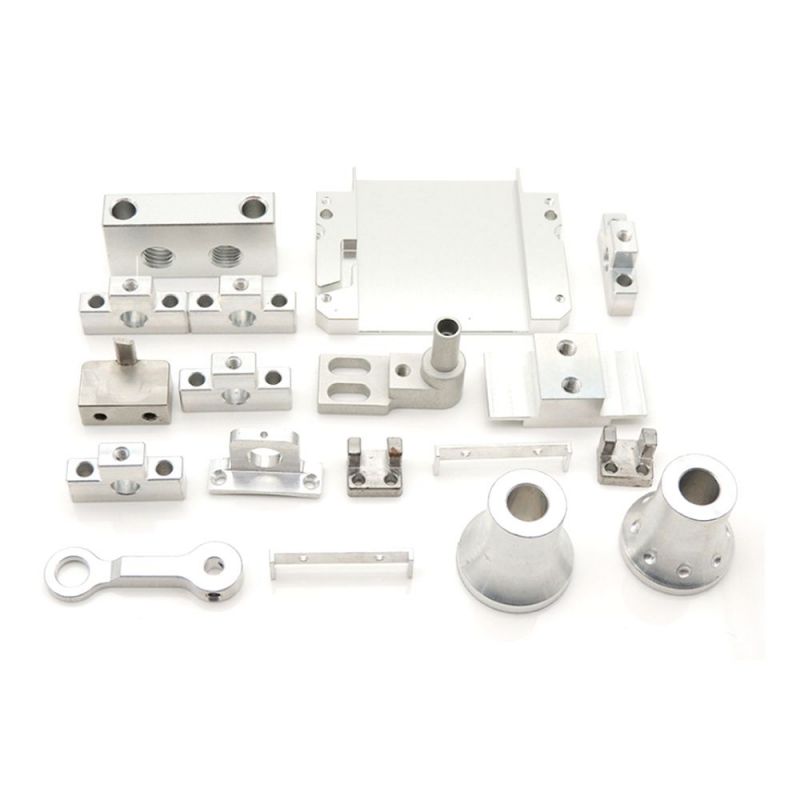- English
- Español
- Português
- русский
- Français
- 日本語
- Deutsch
- tiếng Việt
- Italiano
- Nederlands
- ภาษาไทย
- Polski
- 한국어
- Svenska
- magyar
- Malay
- বাংলা ভাষার
- Dansk
- Suomi
- हिन्दी
- Pilipino
- Türkçe
- Gaeilge
- العربية
- Indonesia
- Norsk
- تمل
- český
- ελληνικά
- український
- Javanese
- فارسی
- தமிழ்
- తెలుగు
- नेपाली
- Burmese
- български
- ລາວ
- Latine
- Қазақша
- Euskal
- Azərbaycan
- Slovenský jazyk
- Македонски
- Lietuvos
- Eesti Keel
- Română
- Slovenski
What Are the Advantages of Aluminum CNC Turning Part for Industrial Applications?
2024-10-21

What are the advantages of Aluminum CNC Turning Part?
1. High precision: The CNC turning technology can achieve high-precision machining, and the accuracy of the Aluminum CNC Turning Part can reach ±0.005mm or even higher.
2. Cost-effective: Compared with other machining methods, CNC turning is a more cost-effective solution for producing large quantities of Aluminum CNC Turning Parts.
3. Wide range of applications: Aluminum CNC Turning Part can be used in various industrial fields, including aerospace, automotive, electronics, medical, and more.
4. Good mechanical properties: Aluminum material has excellent mechanical properties, such as high strength, good toughness, and corrosion resistance.
Why choose Aluminum CNC Turning Part for industrial applications?
1. Lower manufacturing costs: As mentioned above, the CNC turning technology is a cost-effective solution for producing Aluminum CNC Turning Parts, which can help reduce manufacturing costs in the long run.
2. High production efficiency: CNC turning technology can significantly improve production efficiency and shorten lead times.
3. More design flexibility: With CNC turning, it is easier to design complex shapes, features, and patterns on Aluminum CNC Turning Part than using other machining methods.
4. Better surface finish: Aluminum CNC Turning Parts have a smoother and more precise surface finish, which can improve the overall appearance and quality of a product.
In conclusion
Aluminum CNC Turning Part is an essential type of machining part in various industrial applications, thanks to its high precision, cost-effectiveness, wide range of applications, and good mechanical properties. Choosing Aluminum CNC Turning Part as a manufacturing solution can help companies improve their product quality, reduce lead times, and lower manufacturing costs.
Dongguan Fuchengxin Communication Technology Co., Ltd. is a leading manufacturer of Aluminum CNC Turning Parts. With over 10 years of experience, we have been providing high-quality and customized CNC machining solutions to our customers worldwide. We are committed to delivering excellent products and services that meet our customers' needs and expectations. Contact us at Lei.wang@dgfcd.com.cn to learn more about our services.
References
1. Liu, Y., & Wang, Y. (2020). Microscopic quality evaluation of turned parts machined by ultrasonic-assisted precision turning. Journal of Advanced Mechanical Design, Systems, and Manufacturing, 14(5), article no. JAMDSM.2021-0015. https://doi.org/10.1299/jamdsm.2021jamdsm0015
2. Bai, H., Zhu, X., & Sun, J. (2020). Method of cutting parameter optimization for the machining of titanium alloy parts. Materials Science Forum, 1001, 169-173. https://doi.org/10.4028/www.scientific.net/MSF.1001.169
3. Xu, H., & Fu, Y. (2019). Surface integrity analysis of aluminum alloy Al7050-T7451 machined by turning. Journal of Materials Research and Technology, 8(6), 5364-5376. https://doi.org/10.1016/j.jmrt.2019.07.022
4. Li, H., Zuo, Y., & Wu, Y. (2019). Design and analysis of a novel ultraprecision tool holder for turning and grinding. International Journal of Advanced Manufacturing Technology, 101(1-4), 949-960. https://doi.org/10.1007/s00170-018-2988-7
5. Kim, H., Lee, C., & Kim, H. (2018). Optimizing the cutting condition for improving the surface roughness of turned CFRP parts through a Taguchi-based Grey relational analysis. Journal of Composite Materials, 52(18), 2461-2471. https://doi.org/10.1177/0021998317749074
6. Wang, K., Shi, S., & Liu, J. (2018). Precision turning of complex miniature part based on intersection-point trajectory. Journal of Manufacturing Science and Engineering, 140(9), article no. 091011. https://doi.org/10.1115/1.4040178
7. Zhong, L., Li, M., & Kong, F. (2018). Machining-induced residual stress and microstructure modification of aluminum alloy surface by turning. Journal of Materials Processing Technology, 254, 277-285. https://doi.org/10.1016/j.jmatprotec.2017.11.048
8. Quan, Q., Qu, N., & Yang, L. (2017). A numerical machining error prediction method of millimeter-tiny part contour turning based on time-domain average technique. International Journal of Advanced Manufacturing Technology, 90(1-4), 557-570. https://doi.org/10.1007/s00170-016-9148-x
9. Cam, O., Halsa, H., & Pinar, A. (2017). An experimental study on Lean Six Sigma in a turning factory. Journal of Business Research, 77, 56-63. https://doi.org/10.1016/j.jbusres.2017.03.018
10. Zhang, L., & Sun, S. (2016). Research on turning parameters optimization of aluminium alloy profile machining based on taguchi method. Advanced Materials Research, 1104, 7-12. https://doi.org/10.4028/www.scientific.net/AMR.1104.7



